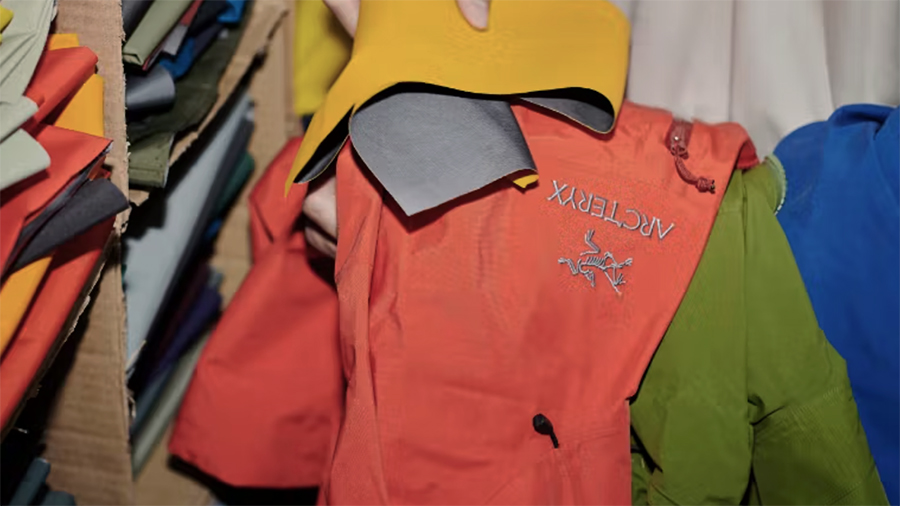Report: New Brand Resale Index Recognizes REI, Arc’Teryx And On As Top Brands
Source:CHINA SPORTING GOODS FEDERATIONRelease time:2023-03-23Clicks:
Article From:SGB Media

Trove released its inaugural Brand Resale Index: Defining the Resale Experience. The Index evaluates leading practice adoptions across 40 brands in four industry verticals: fashion/apparel, outdoor, footwear, and luxury.
Conducted in partnership with OSF Digital, brands were assessed on 147 criteria across brand positioning, commerce and trade-in experiences, with a general consideration of how the resale business model potentially contributes to environmental sustainability benefits.
The Index found that to brands, re-commerce is what e-commerce was two decades ago—a retail model that satisfies the increasing consumer expectation for greater value, experience and sustainability, and a significant opportunity for brands and retailers to exhibit leading commerce practices to elevate and engage new channels of growth.
Trove said this opportunity is why global resale is a $100 billion business growing five times the retail rate and is expected to represent 23 percent of all retail in 2030.
“We are currently at a major inflection point for branded resale, where early development is meeting commerce evolution,” said Andy Ruben, founder and executive chairman of Trove. “We created the Brand Resale Index to evaluate what brands are doing now, where the opportunities lie for the future, and what industries are positioned to lean into the next big transformation. Brands who scale their owned resale programs now will be building a profitable business without relying solely on new item production, ultimately helping to build the protective moat around their businesses by extending the life cycle of their products.”
Out of 40-plus brands across industries, several companies emerged in the Resale Brand Leaderboard by industry vertical:
Overall: REI; 72 percent
Outdoor: Arc’teryx; 68 percent
Fashion/Apparel: Amour Vert; 66 percent
Footwear: On; 59 percent
Luxury: Phillip Lim; 53 percent
Trove found that Luxury brands had a “wide open landscape of opportunities” as luxury goods are the backbone of luxury brands, yet secondary markets are attempting to tell their product stories. In contrast, Outdoor brands emerged as the most mature in the Index, whereas Fashion/Apparel and Footwear have grown the most over the past year.
The report noted that when brands have a narrative in resale, everyone wins. And that branding a resale program is a potent tool for creating a cohesive story that wins over consumers and optimizes the resale platform.
According to the Index, Patagonia leads in brand positioning at resale, adopting 78 percent of marketing and brand positioning practices; 50 percent of brands include resale programs on their websites, but only 34 percent have content about their resale program on their homepage; and only 35 percent of brands promote their resale program through social media.
The report noted that how brands present secondhand items to consumers and integrate the experience with existing commerce channels determines friction within the purchasing journey. It found that
Coach tops the commerce category, implementing 76 percent of commerce-leading practices.
Only 25 percent of brands allow customers to combine purchases of new and pre-owned in the same cart.
Forty-nine percent of brands allow shoppers to filter by product condition (new versus used) on a category home page, despite the product pages including the item’s condition.
For luxury and higher-priced items, 57 percent of companies include brand and product authentication of trade-in or consignment products.
The Index noted that brands that offer seamless trade-in experiences “help unlock the $2.1 trillion of idle branded items in customers’ closets while building brand loyalty.”
The Frye Company’s “The Frye Exchange” led the Customer Experience: Trade-in/Selling (Digital) category, adopting 85 percent of leading practices.
Lululemon’s “Like New” program lead in Brand Trade-in/Selling (Stores) for its trade-in program on brick-and-mortar store interactions, a capability adopted by 44 percent of the brands benchmarked.
Eighty-five percent of brands offer trade-in by mail, enabling customers to trade in their products regardless of location.
Ninety-three percent of brands offer gift cards for trade-in or sales compensation.
While all 40 brands in the Index touted sustainability as a customer benefit, not all resale programs offer good sustainability programs.
The most straightforward way to know if a brand resale program is circular is if the program can shift from new product revenue (revenue from selling new items) to existing product revenue (revenue from selling or servicing existing items over a longer product life).
Brand resale programs based primarily on new product purchase incentives are risky for brands who are seeking sustainable claims.
To read the full report, go here.
Photo courtesy Arc’Teryx
2,079
Copyright ©2013-2024 CHINA SPORTING GOODS FEDERATION, All Rights Reserved ( 京ICP备05083596号-1 )




